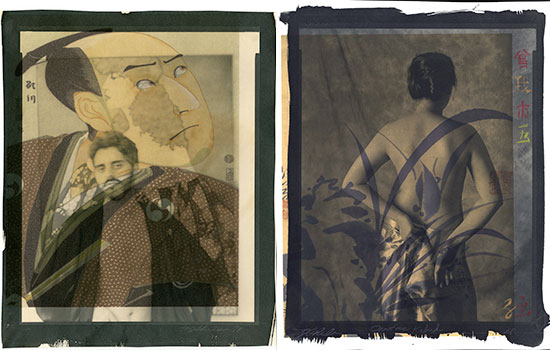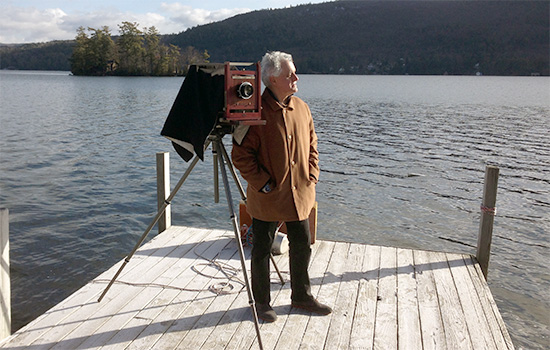Alumnus becomes expert in type of photography
Santa Bannon-Shillea
Thomas Shillea '84 is an expert in platinotype portrait photography.
Not everyone gets the chance to fulfill their dreams, but Thomas Shillea ’84 (photography) was able to through his photography career. While working on a portrait project for the United States Information Agency (USIA), Shillea met and photographed Coretta Scott King in 1985.
“I was a child of the ’60s and was involved in the peace and civil rights movements, so meeting her and hearing her talk about the civil rights movement was an amazing experience,” said Shillea.
Shillea’s years of dedication to perfecting his art have made him an expert in platinotype portrait photography and given him the opportunity to photograph notable individuals like Malcolm Forbes, Sissy Spacek and others for a USIA portrait project in 1986.
Platinotype prints are made using a platinum printing process. The resulting print has a rich color range and unique texture different from normal photos. Platinotype photos lost popularity after 1930, but a few skilled artists like Shillea, who discovered the process at RIT, work to keep the technique alive.
A photographer for over 40 years, Shillea is still producing new work. He is working on a new series, Trinity, which involves overprinting his vintage platinum portraits on Italian Renaissance and Japanese Ukiyo-e artworks. One of his goals is to exhibit his Ukiyo-e inspired photographs at a gallery in Tokyo.
After Shillea graduated, he moved to Philadelphia to begin his career as a fine arts photographer. In 1982, he hosted an exhibition of his platinum portraits at the Rosenfeld Gallery.
Jay Garfinkel, the vice president of TV and Photography Production of the USIA, attended the exhibit, and four years later Garfinkel contacted Shillea about a portrait project he was planning.
“He liked my style and had never seen a platinum print before. He was impressed by its visual and tactile quality, so he invited me to work on the project,” said Shillea.
One unique experience from his USIA project was photographing former President Ronald Reagan in the Oval Office. It was a strange, highly restricted experience, but the portrait session was shortly after the president had been shot, so Shillea said he understood the caution.
“I was not allowed to approach the president closer than 15 feet and was warned by a Secret Service agent that if I did so I could be shot and arrested,” said Shillea. “Naturally, I was disappointed from the perspective of my photography, but I was still very pleased to have this unique opportunity.”
This project is just one of many that Shillea has worked on over the years. His work is featured in museums across the country, such as the National Portrait Gallery, the Museum of African American History and Culture and the Philadelphia Museum of Art.
In addition to his photography career, Shillea is the director of Art Programs at Northampton Community College in Bethlehem, Pa., where he currently lives. Shillea enjoys “sharing the sense of wonder” that he experienced when learning about platinum prints.
“If you have a dream, go for it, and don’t stop going for it even if you fail,” said Shillea. “There were frustrations and failures along the path of my career, but I never lost my passion or let go of my dream.”
 Thomas Shillea is working on a new series, Trinity, which involves overprinting his vintage platinum portraits on Italian Renaissance and Japanese Ukiyo-e artworks. Thomas Shillea
Thomas Shillea is working on a new series, Trinity, which involves overprinting his vintage platinum portraits on Italian Renaissance and Japanese Ukiyo-e artworks. Thomas Shillea













